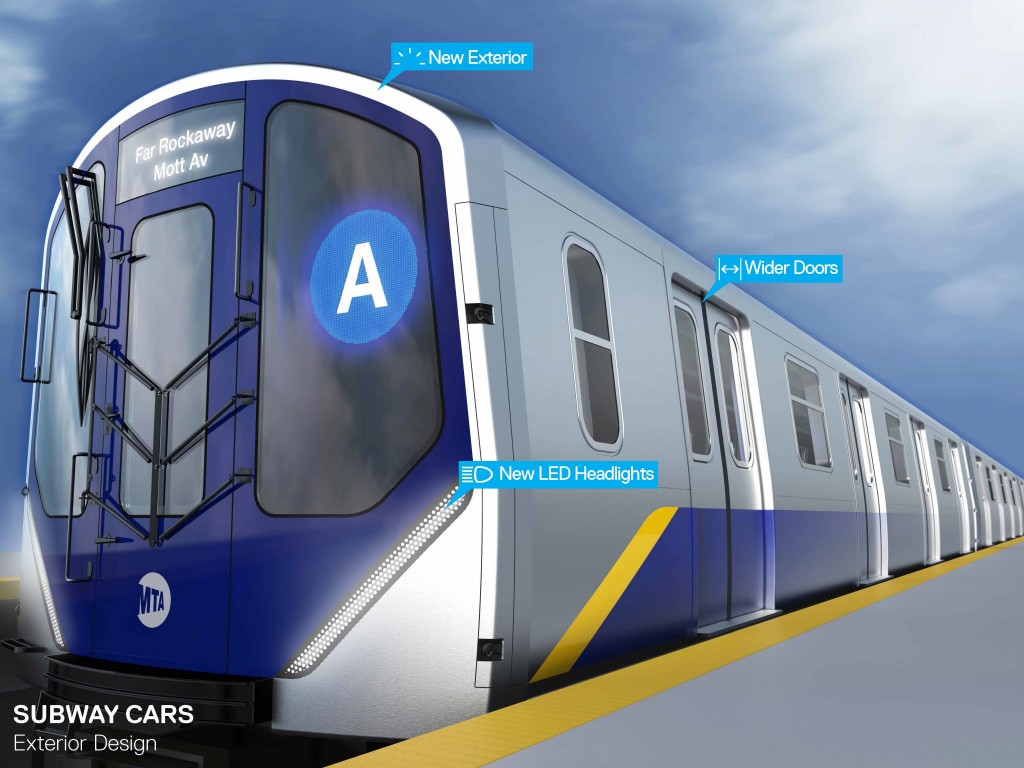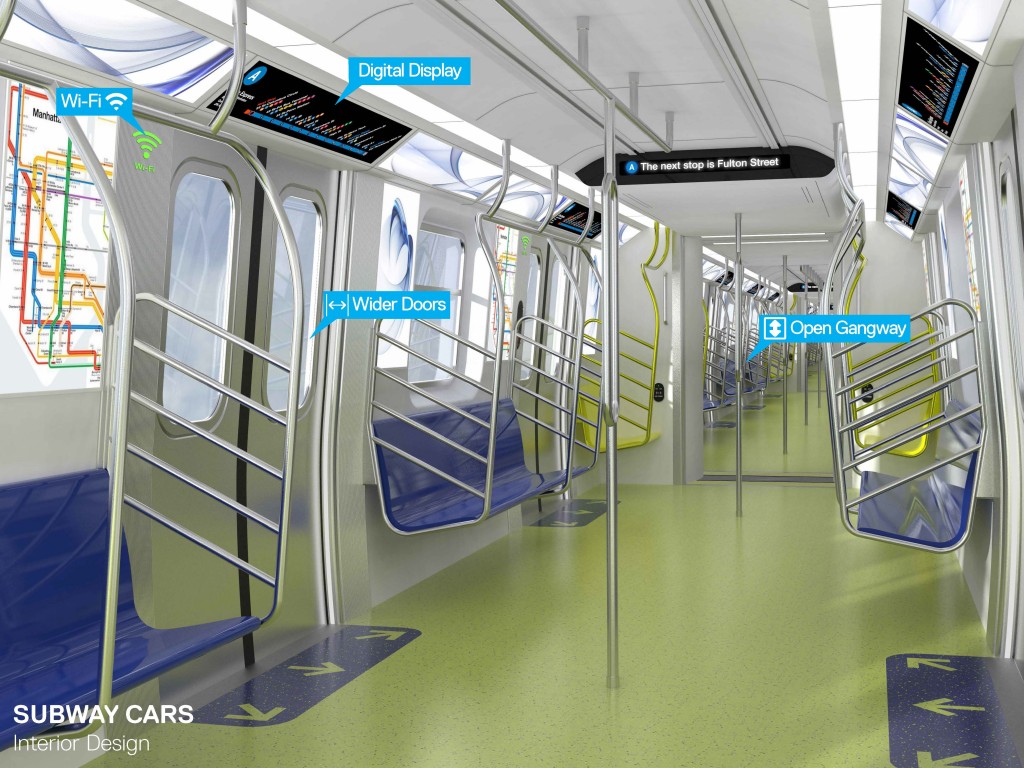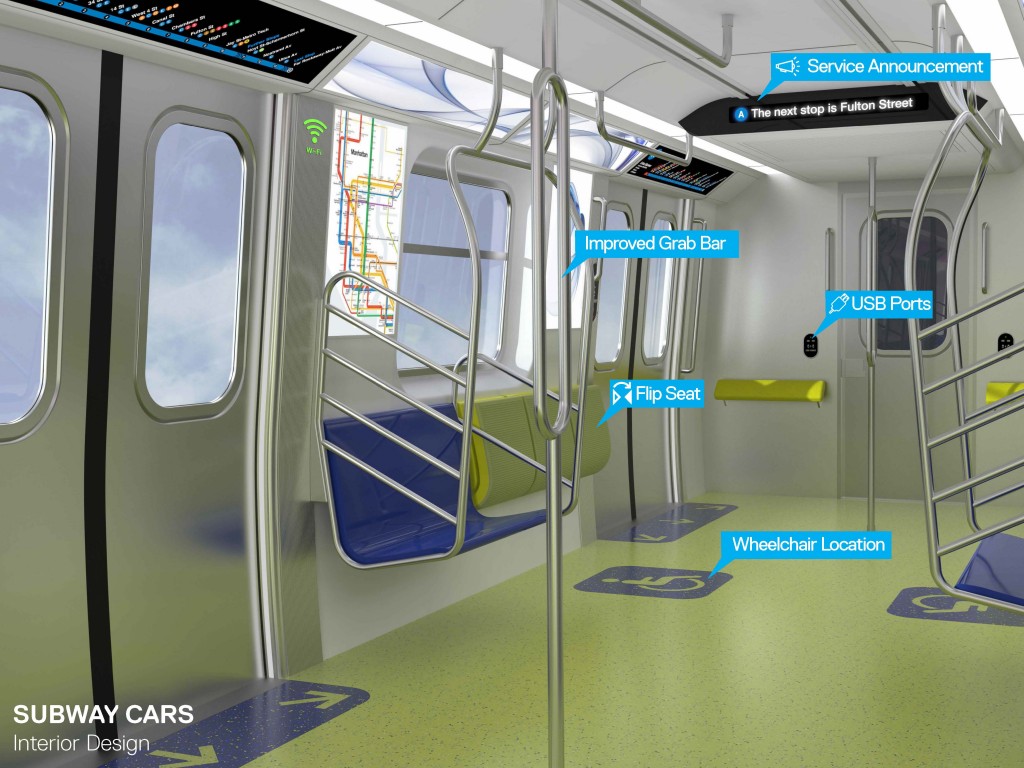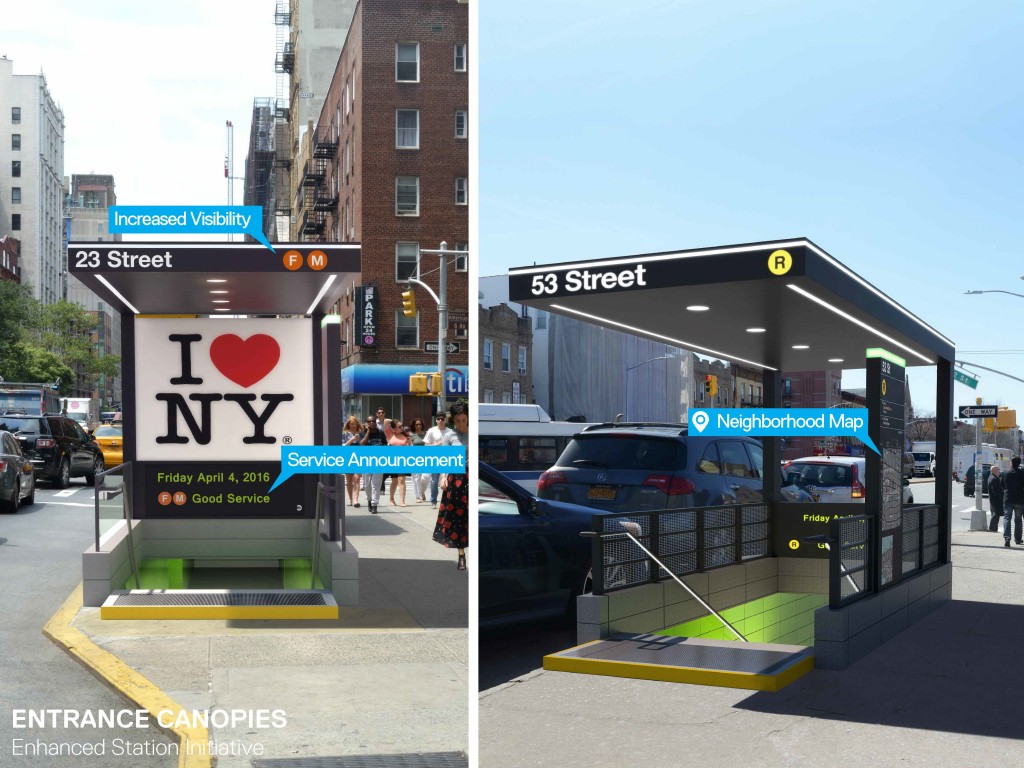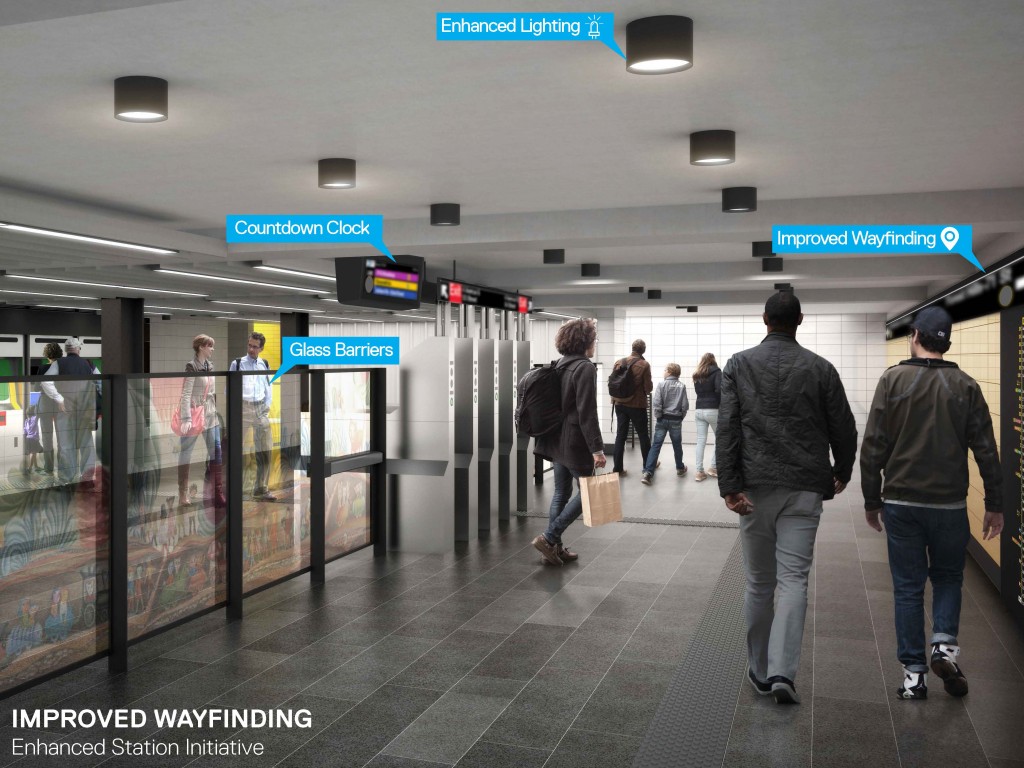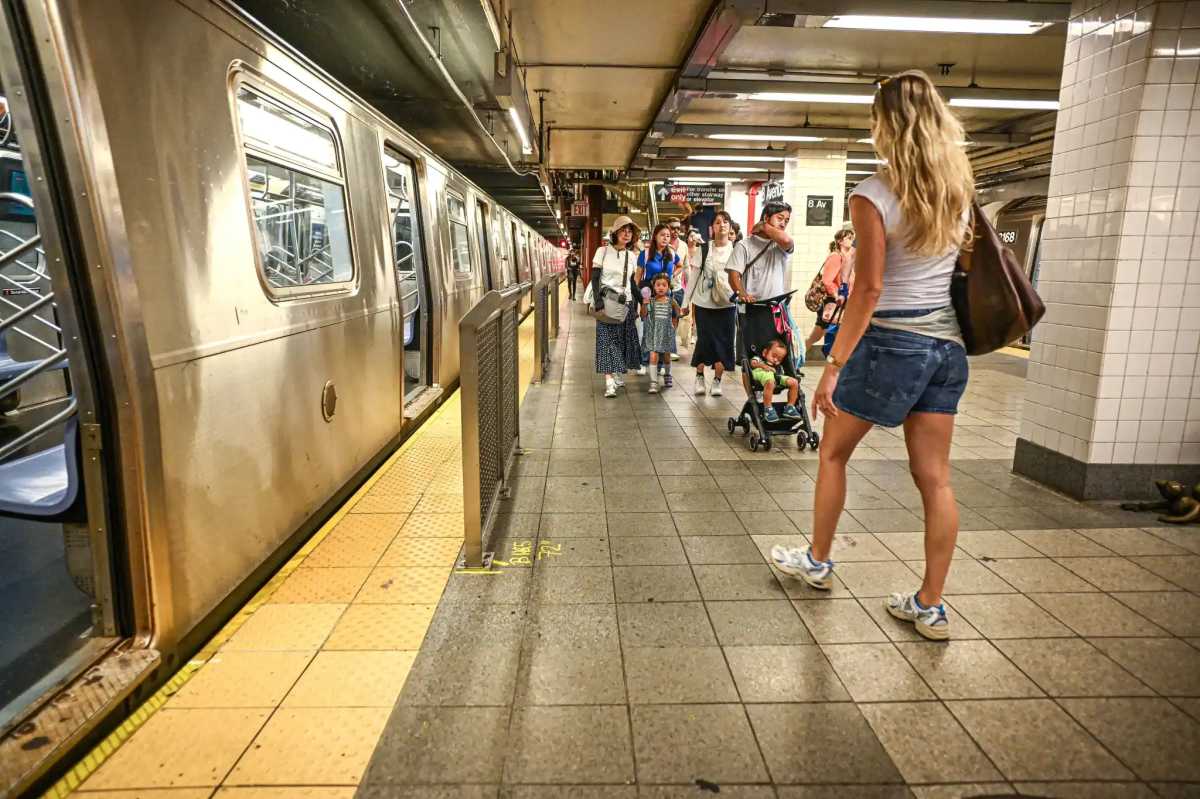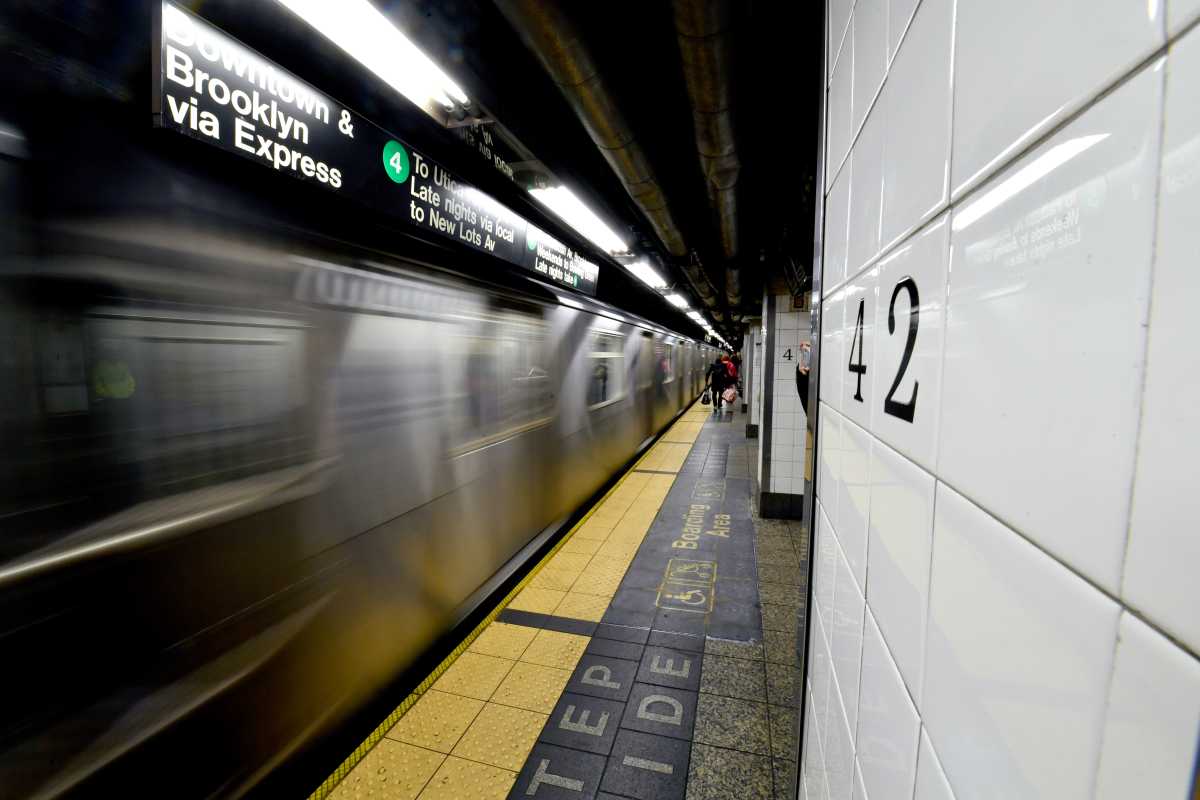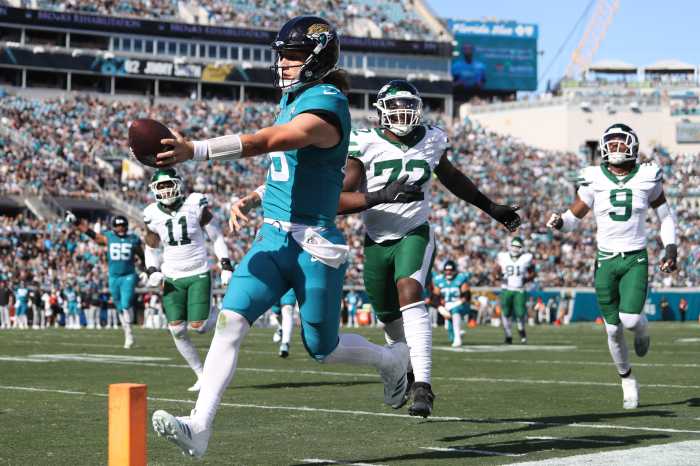Open cars, wider doors, Wi-Fi and charging stations are just some of the features included in the new subway cars unveiled by Governor Andrew Cuomo on Monday.
As part of the $27 billion, five-year MTA Capital Program, 1,025 new subway cars will be enhanced and 31 stations will be completely renovated.
Up to 750 trains will have “open car end” designs, which means the door between cars will be replaced with an accordion-like connector in order to create longer, open spaces. This feature allows for “greater passenger flow movement and increasing capacity in the process,” according to a press release.
Other large cities such as London, Paris and Toronto use this design element.
All 1,025 cars will have wider doors – up 58 inches from 50 inches, which the MTA hopes will allow customers to enter and exit more quickly. According to a computer simulation of passenger flow conducted on behalf of the MTA, wider doors can reduce a train’s dwell time in the station by 32 percent.
Wi-Fi, USB chargers, full-color digital customer information displays, digital advertisements, illuminated door opening alerts and security cameras will also be installed in the new cars.
The new exteriors will include a blue font with with large windows, LED headlights and a blue stripe with gold accents along the side.
Cuomo also unveiled plans for extensive renovations taking place at 31 subway stations across the five boroughs. The plan includes renewal work at more than 170 stations across the city. In January, Cuomo announced that these renovations would be completed by 2020.
Queens stations that will receive extensive renovations include the 30th Avenue, Broadway, 36th Avenue and 39th Avenue N/Q stations in Astoria. The Parsons Boulevard F station in Jamaica and the 67 Avenue and Northern Boulevard M/F stations in Forest Hills and Woodside, respectively, will also be renovated.
New stations will include enhanced lighting, improved signage such as digital, real-time updates about on-time performance at subway entrances before customers even enter the station and countdown clocks. Wi-Fi and new art that “consider the architectural legacy of each station, and remain sensitive to historical elements” will also be installed.
A requests for proposal (RFP) will be issued for each package of 31 stations over the next 12 months and the first contract is expected to be awarded in the fall. The MTA will shut down each station going through extensive renovations for six months rather than making the renovations on nights and weekends, Cuomo said at a press conference.
“New York deserves a world-class transportation network, worthy of its role as the heartbeat of the 21st-century economy,” Cuomo said. “The MTA design team developed a bold and visionary re-imagining of the quintessential commuter experience, incorporating best practices from global transit systems, and focusing on our core mission to renew, enhance and expand.”
The RFP will outline what the MTA is looking for in terms of the timeline of design and production and cost-effectiveness.



